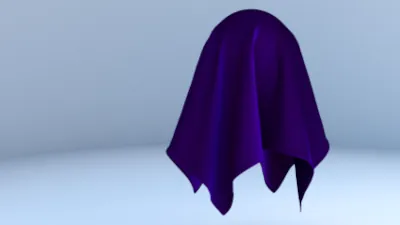Maya 2020 fundamentals - modelling the real world
Get halfway through a model and find it's an unworkable mess? Can't add edge loops where you need them? Can't subdivide a mesh properly? If any of this sounds familiar check this course out.
#
1
20-07-2005
, 09:07 PM
off-topic - raid help
I'm building a new computer and I currently have only one HDD in it. The mobo supports RAID0, 1, 0+1, JBOD. I've never really played with RAID so my question is will I run into problems if I now put XP on the HDD I got and setup the raid system later when i get a second HDD?
#
2
21-07-2005
, 08:46 AM
Subscriber
Join Date: Jun 2004
Join Date: Jun 2004
Posts: 119
Havent read through it all, but from what i can remeber a friend of mine told me a while back is that RAID's need to be set up then data put onto them.
Im not sure how valid/safe it would be to install XP then try and add another drive and forcing them to be a RAID.
Just out of intrest would you set the RAID up where one drive is a constant real time backup of the other, or set it so that the OS would see the 2 drives as one big drive?
#
3
21-07-2005
, 08:53 AM
Guest
Posts: n/a
The raid array has to be formatted, so all data will be erased. However I know some raid software will allow for the array to be installed after the OS install, does a on the fly conversion during the raid build. You would need to check the user manual for your board.
JBOD stands for "just a bunch of drives" and enables several hard drives to be interconnected.
RAID 0 is a setup configuration that does not live up to the name of "Redundant Array of Independent/Inexpensive Drives", because redundancy and/or data security does not exist. Here a so-called stripe set is set up using two or more hard drives, depending on the type of controller used, so that data can be written and read on all hard drives using an alternating procedure. That achieves highest possible performance, but risk of failure multiplies proportionally to the number of drives. If one drives coughs it, the whole array breaks down with it.
RAID 0 is suitable wherever data loss is not the end of the world, for example, in the case of temporary data or a fast drive for video cutters.
RAID 1, however, is the exact opposite: It offers maximum stability for minimum hardware workload. Here the content of a hard drive is simultaneously written to a second hard drive (this technique is known as mirroring) so that should one drive fail, the second drive carries on running. The big disadvantage of RAID 1 is that the available storage capacity is halved. Configurations with more than one mirror are also possible, but then the available capacity is accordingly lower. Good implementations of RAID 1 enable data to be read simultaneously from both hard drives, so that at least the read performance is higher than with a single drive.
RAID 1 is ideal for workstation computers or small servers that have to be constantly available or indeed for creation of an area for short-term back-ups.
RAID 3 is almost insignificant these days. It requires at least three hard drives and dedicates one drive to storing parity data. A stripe set is written to all the other drives, as in the case of RAID 0. Should the parity drive fail, the RAID array stays up and running. Should one of the stripe drives fail, its content has to be restored in realtime using the data on the parity drive. But this is where bottlenecks build up, because the parity drive determines the speed. And by the way, that applies to every write procedure, which is why RAID 3 has faded into obscurity.
In our opinion RAID 3 is only interesting for a few hard drives and in the case of systems where good read performance is imperative.
RAID 5 is another "fail proof" RAID mode, because parity data are saved in this case, too. Unlike in the case of RAID 3, however, these are distributed among all hard drives, so that the working speed of a RAID 5 array increases with every additional hard drive.
Looky here for more info
Last edited by Tubby; 21-07-2005 at 09:16 AM.
#
4
21-07-2005
, 12:51 PM

The computer just freezes randomly and I don't have the slightes clue why. God I hate dealing with this crap... Such a waste of time...
#
5
21-07-2005
, 02:04 PM
Subscriber
Join Date: Jun 2004
Join Date: Jun 2004
Posts: 119
Originally posted by kbrown
Thanks guys. I gotta think of this a bit more carefully. Right now I'm dealing with instability issues with the machine
The computer just freezes randomly and I don't have the slightes clue why. God I hate dealing with this crap... Such a waste of time...
99% of the time random crashes are down to faulty memory. A dodgy sector can allow the machine to run for hours without a problem, then just die when the memory sector is accesed. The next reboot could have the memory being accesed straight away causing it to crash at a completly different time.
Try moving the stick/sticks around, or only using one stick (if you normaly have 2 or more).
There are also a few memory testing software that can diagnose the issue.
Good luck
#
6
21-07-2005
, 04:45 PM
Guest
Posts: n/a
Number 1 suspect is Ram as pointed out by azimuth.Thanks guys. I gotta think of this a bit more carefully. Right now I'm dealing with instability issues with the machine
Number 2 suspect is cpu heatsink/fan not fitted correctly.
Number 3 suspect is power supply esp if it came with a cheap case or used from old system. Remember new AMD`s and Intel chips have much higher power requirements, ditto with videocards.
Number 4 suspect is a driver issue. Try a clean install of OS. Run for a while, see if it locks up/crashs if not try installing drivers one at a time. Use the latest drivers if possible.
To test ram try Memtest86 [HERE]
Test single stick at a time !
Make sure cpu heatsink/fan is installed correctly, easy to get it wrong on AMD not so on Intel. If you remove heatsink, you will need to remove the remains of the thermal pad and replace it with some thermal compond, just a very thin layer.
See if you can loan a higher rated PSU from someone and test system again.
#
7
21-07-2005
, 06:46 PM
Posting Rules Forum Rules
Similar Threads
6000 word essay. Need topic suggestions.
by elephantinc in forum Maya Basics & Newbie Lounge replies 15 on 13-06-2010
Stereoscopic topic ( it rhymes :) )
by mastone in forum Maya Basics & Newbie Lounge replies 0 on 13-04-2010
RAID 1 on an existing volume?
by neoarcadia in forum Maya Basics & Newbie Lounge replies 4 on 09-12-2003
Topics
New tutorial - Create tileable textures from photos. Photoshop to Alchemist to Maya 2
By David
Site News & Announcements
5
Free Courses
Full Courses
VFX News
How computer animation was used 30 years ago to make a Roger Rabbit short
On 2022-07-18 14:30:13
Sneak peek at Houdini 19.5
On 2022-07-18 14:17:59
VFX Breakdown The Man Who Fell To Earth
On 2022-07-15 13:14:36
Resident Evil - Teaser Trailer
On 2022-05-13 13:52:25
New cloud modeling nodes for Bifrost
On 2022-05-02 20:24:13
MPC Showreel 2022
On 2022-04-13 16:02:13








